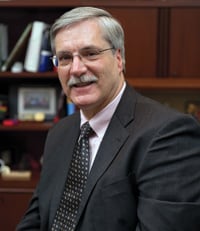Guest Column

At first glance, public health and engineering seem like very distant professions: vaccines, condoms, and outbreak investigations versus bridges, nanomaterials, and robots.
However, our two fields are linked in many ways, and both benefit from close collaboration. Consider perhaps the best example: water.
In 1900, there were an estimated 100 typhoid cases per 100,000 Americans, according to the Centers for Disease Control and Prevention. By 2006, there were just 0.1 cases per 100,000 (and most of those were international travelers). The reason for this stunning decline? The national adoption of effective water treatment. As the supply of chlorinated water increased, typhoid cases decreased.
Of course, the person most responsible for this dramatic impact on typhoid was Abel Wolman ’13 (A&S), ’15, the quintessential public health engineer. His method for a safe, reliable technique for water chlorination and its subsequent adoption in water treatment plants worldwide have saved literally millions of lives—the measure of impact that we in public health constantly strive to achieve.
Unfortunately, considerable challenges remain. They offer ample opportunities for public health and engineering to join forces and make a difference.
Nearly 1 billion people lack safe drinking water, and 2 billion do not have access to adequate sanitation. As the World Health Organization reports, this leads directly to about 1.6 million deaths each year from diarrheal diseases like cholera. It’s especially tragic that nine out of 10 of those lives lost are children under the age of 5.
Abel Wolman proved that powerful, lifesaving results can be achieved when public health and engineering work together on seemingly intransigent problems. For decades at Johns Hopkins, he personified these ties by chairing sanitary engineering departments in the schools of Engineering and Public Health. (He actually made this joint appointment a condition for his employment at the university.) Fortunately for all of us, he passed on his passion and beliefs to his equally remarkable son, M. Gordon “Reds” Wolman ’49 (A&S).
In the late 1990s, Reds led initial efforts to launch a Center for Water and Health at Johns Hopkins. One of his first successes was to recruit a young water researcher named Kellogg Schwab. Now a full professor in our Department of Environmental Environmental Environmental Health Sciences, Kellogg leads both the center and the university-wide Johns Hopkins Global Water Program.
Abel Wolman proved that powerful, lifesaving results can be achieved when public health and engineering work together on seemingly intransigent problems.
True to the Wolman paradigm, the Global Water Program collaborations emphasize the synergies of our schools. They seek to develop sustainable infrastructure, pioneer ways to monitor and treat emerging contaminants in drinking water, and explore cutting-edge topics like water reuse, innovative membrane and filtration technologies, and the water-energy nexus. In addition,Hopkins researchers are investigating estuarine health and coastal water quality within the context of a changing climate through focused study of the Chesapeake Bay.
These ongoing efforts should help us chart the way forward. Together we will deploy the latest science and launch new research initiatives that will lead to new models for intervention based on inexpensive, scalable strategies that meet the critical global demands for better sanitation and improved drinking water.
Reds Wolman was fond of saying that he spent his whole life in conversation with his dad. My hope is that our two professions— different but very much related— will stay in “conversation” and continue exploring new ways to improve health and save lives around the world.
Michael J. Klag, MPH ’87 (SPH), is dean of the Johns Hopkins Bloomberg School of Public Health.




